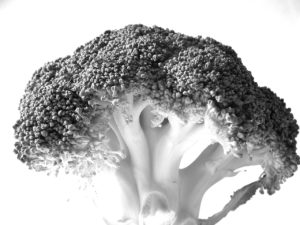
This is a three-part series. In this part, I cover allergies. In Part 2 I will highlight four foods associated with cutting your risk of allergy in half and improving your symptoms if you are already have allergies. In Part 3 I will discuss asthma.
If you have ever found yourself sneezing, itching or swelling from something you ate, breathed or touched, you are among the up to 30 percent of the population worldwide who suffer from allergies.
In 2010 alone, allergic rhinitis—inflammation of your nose—due to allergies, brought 11.1 million people to the doctor. In that same year, Americans spent about $17.5 billion in health costs related to the condition. Food allergies cost society an additional $25 billion each year.1
The term “allergy” was coined by Austrian pediatrician Clemens von Pirquet in 1906. He combined the Greek word allos, which means altered, with the word ergia, which means reactivity. Today the word allergy is defined as an altered reactivity to specific substances, otherwise harmless to people.
There are specific allergies, such as sometimes fatal reactions to things like bees, latex, peanuts or shellfish. There also are nonspecific allergies such as those that occur seasonally or even year round in reaction to one or many airborne particles such as pollen or pet dander.
While allergies have likely been around as long as humans, the science of allergy testing and treatment is relatively new. Dr. John Bostock first accurately described hay fever in 1819, as a disease that affects the upper respiratory tract. Fifty years later Charles Blakely performed the first skin test. He applied pollen through a small break in the skin.
Subsequently, various scientists described specific allergies. For example, allergic reactions to latex were first described in the medical literature in 1927. Anaphylaxis, a sometimes life-threatening hyper-reactive response to a substance, was described just before that, in 1913.
The first antihistamines to treat these newly described allergies were developed in the early 1940s, including Benadryl, which was first marketed as a prescription drug in 1946. The EpiPen, a fast-dosing epinephrine to treat severe, life-threatening allergic response, was released in the 1970s.
Although scientists have given us these and many more options to relieve symptoms, in most cases they are still working on the cure, that is, stopping an allergic response in the first place.
Some of the most interesting cure research has come in the area of the life-threatening allergies, such as peanut allergies. Sufferers of this sometimes-deadly ailment can react with the smallest exposure. For example, one 2-year old girl touched her mouth after touching her caregiver’s hand, shortly after her caregiver had consumed trail mix that contained peanuts. The girl’s face swelled immediately, and the caregiver needed to administer an EpiPen dose.
Those with peanut allergy need to avoid all contact with peanut, no matter how small, and carry fast-acting epinephrine everywhere they go. However, new treatment options are emerging, such as those designed to blunt the response by reducing a person’s sensitivity to the substance. Another potential option is a patch that slowly releases a small amount of peanut protein to the skin, also to help reduce sensitivity.
In addition to the suffering that comes from the allergies themselves, nearly all medications come with a list of side effects. Those to treat allergies are no different.
The side effects of Benadryl, a medication that is an important part of defense against nearly all allergic responses, include drowsiness, fatigue, dizziness, disturbed coordination, constipation, blurred vision, tremor, loss of appetite, headache and nausea, among others.
The good news is there are treatment options without side effects. One option that has shown some success is the Emotional Freedom Technique, or EFT, a tool that has proved useful for a variety of physical, emotional and performance problems. EFT operates on the principle that every part of life that needs improvement can be improved by resolving underlying emotional issues.
With EFT, the client taps on different body parts while verbalizing statements, first about the negative feelings connected to the problem and then the positive. Sometimes clients experience long-lasting relief after just one session. Other clients require additional sessions.
Another side-effect-free option to stop allergic postnasal drip has been under our noses all along. People can make several changes in their eating habits that control symptoms or even help them avoid getting allergies in the first place. In some cases, these options rival or even best the medical options available.
For example, some research studies have shown that there seems to be an “association between an increase in asthma prevalence and a decreased consumption of fresh fruits, green vegetables and other dietary sources of antioxidants.” 2,3
In addition, what we eat can help us when we are exposed to toxins like air pollution, something nearly all of us are exposed to every day. Due to its contribution to other causes of death, outdoor air pollution may be considered the ninth leading cause of death.4
While we address the causes to eliminate the risk, we need options to help our bodies in the fight. Several studies have shown that cruciferous vegetables significantly help. One study in particular showed the benefit of broccoli in fighting both allergic and asthmatic responses to pollution.5
There is more. In particular, you can include four foods in your diet every day that are associated with cutting your risk of allergies in half. I’ll highlight those in my next blog post.
References

Sorry, comments are closed for this post.